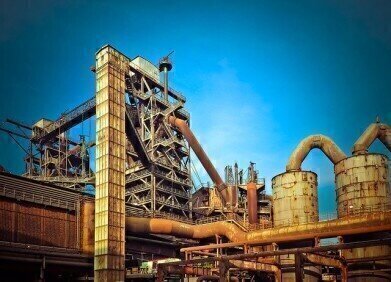Analytical Instrumentation
How Are Furnaces Used for Analysis?
Aug 13 2021
From calculating efficiency to measuring engine performance, combustion analysers are pivotal to the oil and gas industry. Furnaces are a fundamental component of combustion analysers, providing the heat needed to calculate variables such as gas levels, stack temperature, combustion efficiency, soot levels and flue pressure. In the combustion analyser realm, there’s a long-running debate over whether a horizontal or vertical setup performs better. Some manufacturers prefer the traditional vertical setup, while others champion horizontal placement.
A new generation of combustion analyser
Dutch-owned company TE Instruments is a pioneer of combustion analyser technology and recently launched the new Xplorer-V for analysis of total sulphur and nitrogen content in hydrocarbon products with boiling points of between 25°C and 520°C. Featuring a horizontal furnace, the Xplorer-V analyser uses a combination of UV-fluorescence and chemiluminescence to calculate sulphur and nitrogen levels.
“A vertically placed furnace gives a different peak shape compared to horizontal analyser units,” reads a paper published on the TE Instruments website. “Peaks seem to reach an equilibrium in a faster way once reaching the detector chambers after combustion and keeps a steadily filled detector room. This is different compared to the peak behaviour, which is seen in the Xplorer TN/TS analyser.”
Improving performance and results with horizontal furnace
While the model’s Xplorer TNTS predecessor features a vertical furnace, the Xplorer-V utilises a horizontal design that favours solid applications. As well as offering excellent performance in terms of reproducibility and repeatability, the horizontal furnace used in the Xplorer-V improves performance when measuring samples with boiling points of greater than or equal to 420 °C.
In general, TE recommends vertical analysers be used for day-to-day analysis of liquid and gas samples. Benefits include ease of use and steady, reliable results with guaranteed uptime. Horizontal furnace setups are efficient across a wide range of matrices, so long as boiling ranges are respected. Ultimately, TE concludes that choosing a vertical or horizontal furnace system comes down to testing goals as well as personal preference.
“From the tests run on both analyser systems, it is hard to appoint a clear winner in our laboratories,” reads the report. “Some samples run a little better on the vertical system, some on the horizontal system. In both situations, it is clearly seen that all different materials can be run on either one of these systems. It seems like it all comes back again to personal preferences and experience or situation-dependant.”
Horizontal vs vertical furnace setups
Want to know more about horizontal vs vertical furnace setups? Writing on behalf of TE Instruments, Sebastian Sanchez weighs up the pros and cons of the two furnace setups in ‘Total Sulfur and Total Nitrogen analysis – Horizontal versus Vertical furnace arrangement’.
Digital Edition
PIN 25.1 Feb/March
March 2024
In This Edition Safety - The technology behind the ION Science Tiger XT - Safety with ammonia and LOHCs as hydrogen carriers Analytical Instrumentation - Discussion on new tribology te...
View all digital editions
Events
Apr 28 2024 Montreal, Quebec, Canada
Apr 30 2024 Birmingham, UK
May 03 2024 Seoul, South Korea
May 05 2024 Seville, Spain
May 06 2024 Riyadh, Saudi Arabia


















